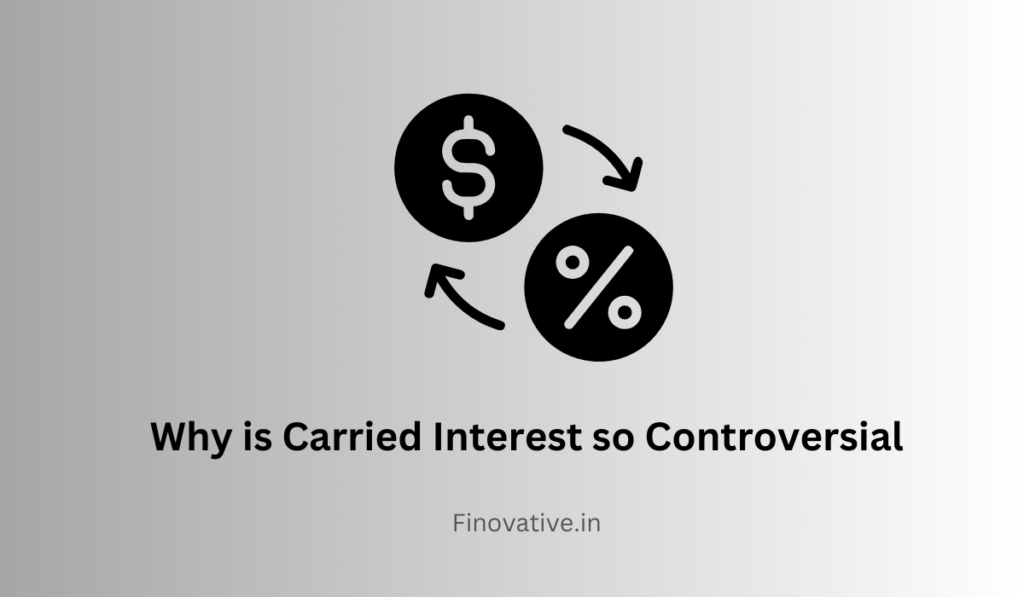Carried interest, a term often associated with private equity, venture capital, and hedge funds, has long been controversial and debated. This financial arrangement, which allows investment managers to receive a share of the profits generated by an investment fund, has faced scrutiny due to its perceived inequities in taxation and compensation. This comprehensive guide will delve into why carried interest is so controversial, examining its intricacies, implications, and arguments from both sides of the debate.
Understanding Carried Interest
Before we explore the controversy surrounding carried interest, it’s essential to have a clear understanding of what it entails:
Carried Interest Definition: Carried interest, often referred to as “carry,” is a portion of the profits earned by an investment fund that is allocated to the fund’s managers, also known as general partners. It serves as a performance-based incentive, aligning the interests of fund managers with those of the investors in the fund.
Purpose of Carried Interest: Carried interest motivates investment professionals to make strategic investment decisions and actively manage the fund to maximize returns for investors. It rewards managers for their expertise and success in generating profits.
The Controversy Surrounding Carried Interest
The controversy surrounding carried interest primarily revolves around two key aspects: its tax treatment and the perceived inequities in compensation. Let’s delve into each of these aspects to understand why carried interest is so contentious.
1. Tax Treatment: The Carried Interest Tax Loophole
The most significant source of controversy surrounding carried interest is its tax treatment, often referred to as the “carried interest tax loophole.” This loophole allows investment managers to pay lower tax rates on their earnings, a benefit not available to individuals with similar income levels who earn ordinary wages and salaries.
How the Loophole Works
The controversy stems from the fact that carried interest is often classified as a long-term capital gain for tax purposes. Capital gains, such as those generated from the sale of investments held for more than one year, are subject to a lower tax rate in the United States, typically ranging from 15% to 20%. In contrast, ordinary income, which includes wages and salaries, can be taxed at higher rates, often exceeding 35% or even 37% for high-income individuals.
The Implication
As a result of this tax treatment, investment managers who receive carried interest pay lower taxes on their substantial earnings compared to individuals with similar incomes in other professions. Critics argue that this tax arrangement is fundamentally unfair and exacerbates income inequality.
2. Compensation Inequities: High Rewards for Investment Managers
Beyond tax treatment, the controversy surrounding carried interest extends to the level of compensation it provides to investment managers. While proponents argue that it aligns the interests of managers with those of investors and rewards successful performance, critics contend that it can result in excessively high rewards for managers, even in cases of moderate or poor fund performance.
High-Water Mark and Catch-Up Provisions
The inclusion of mechanisms like high-water marks and catch-up provisions in carried interest calculations can lead to significant payouts for managers. High-water marks prevent managers from receiving carried interest on profits that have already been distributed to investors in previous periods. Catch-up provisions, on the other hand, allow managers to receive a more substantial share of profits until they reach a predetermined target percentage. After reaching this target, profits are divided according to the established carried interest percentage.
Critics argue that these provisions can result in managers receiving a disproportionate share of profits, even when the fund’s overall performance is lackluster.
Arguments in Favor of Carried Interest
Proponents of carried interest offer several arguments in its defense:
1. Investment Incentives
The lower tax rate on carried interest is seen as an incentive for investment managers to allocate their resources to potentially high-growth ventures. This incentivizes investment in the economy and supports economic growth and job creation.
2. Alignment of Interests
Carried interest aligns the interests of investment managers with those of the fund’s investors. By allowing managers to share in the fund’s profits, it ensures that they are motivated to make sound investment decisions that yield positive returns.
3. Risk and Reward
Investment managers often assume significant risks in their roles. They may not receive any carried interest if the fund underperforms or fails to surpass the hurdle rate. Therefore, the lower tax rate on carried interest can be seen as a reward for taking on this risk.
Arguments Against Carried Interest
Critics of carried interest raise several concerns:
1. Unfair Taxation
One of the primary criticisms is that the current tax treatment of carried interest is fundamentally unfair. Critics argue that it allows wealthy investment managers to pay lower tax rates on their earnings compared to individuals with similar income levels who earn ordinary wages and salaries.
2. Income Inequality
The carried interest tax loophole has been cited as contributing to income inequality. By allowing investment managers to pay lower taxes on their substantial earnings, it exacerbates disparities in wealth and income.
3. Revenue Loss
The U.S. government loses significant tax revenue due to the carried interest tax treatment. Critics argue that closing this loophole could provide additional revenue that could be used for important public services and programs.
Legislative Efforts to Address the Issue
Over the years, there have been several legislative efforts to change the tax treatment of carried interest. These efforts have aimed to:
1. Reclassify Carried Interest
Some proposed legislation seeks to reclassify carried interest as ordinary income rather than capital gains. This would subject investment managers to higher tax rates on their earnings.
2. Increase Holding Period
Other proposals have suggested increasing the minimum holding period for investments to qualify for the lower capital gains tax rate. This change would impact the timing of taxation for carried interest.
3. Implement Minimum Income Thresholds
Certain legislative proposals have advocated for the implementation of minimum income thresholds for individuals benefiting from the carried interest tax treatment. Those below the threshold would continue to pay the lower tax rate, while those above it would be subject to higher rates.
The Debate Continues
The debate over carried interest is far from settled, and it remains a contentious issue in the world of finance and taxation. The resolution of this issue may require a careful balancing act that considers the potential impacts on investment incentives, economic growth, and tax equity.
As of my last knowledge update in September 2021, the tax treatment of carried interest had not undergone significant changes at the federal level in the United States. However, it’s important to note that tax policies can evolve, and future legislative changes could potentially address the carried interest tax loophole in one way or another.
Conclusion
Carried interest has been a source of controversy and debate due to its tax treatment and the perceived inequities in compensation. The tax loophole allows investment managers to pay lower tax rates on their earnings, leading to concerns about fairness and income inequality.
The debate surrounding carried interest highlights the ongoing discussions and challenges related to tax policy, equity, and economic incentives. As the tax code evolves and legislative efforts continue, the future of the carried interest tax treatment remains uncertain, making it an important subject for those interested in finance, taxation, and economic policy.


